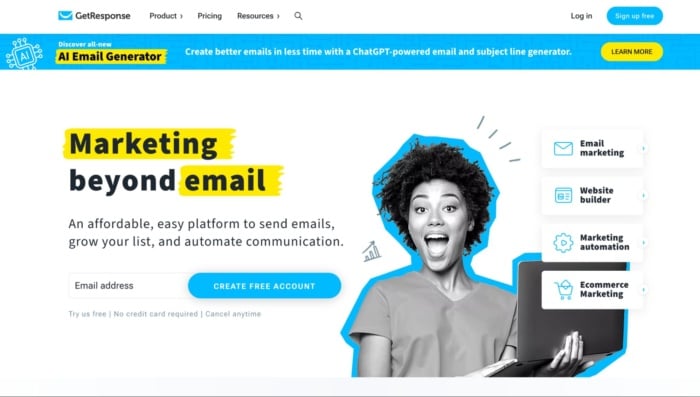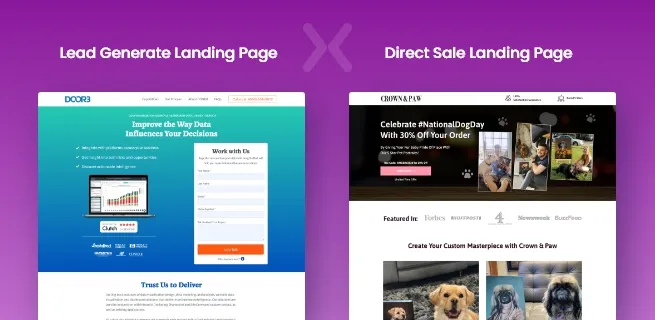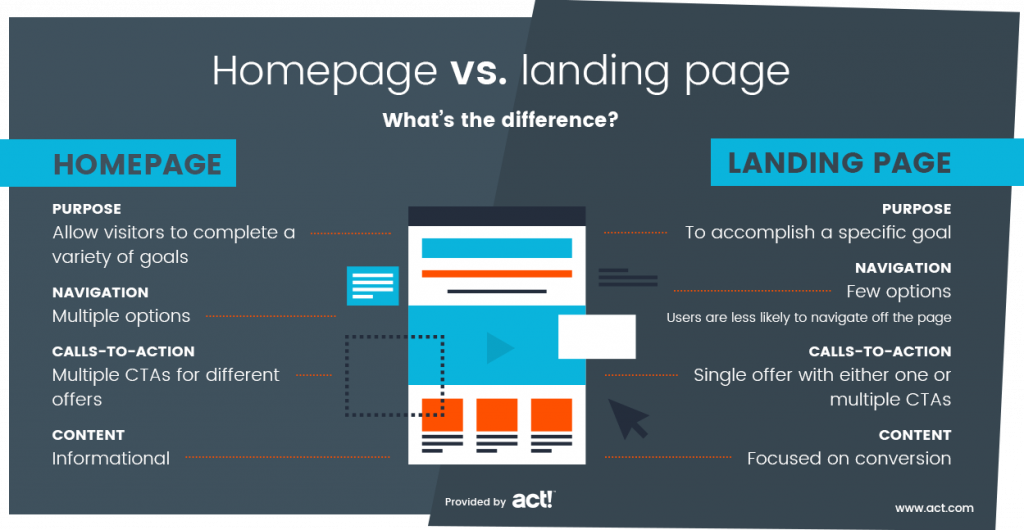Imagine you’re browsing the internet and stumble upon a page that instantly grabs your attention. It speaks directly to your needs, offers a solution you didn’t even know you were looking for, and makes it incredibly easy for you to take action.
This isn’t just a happy coincidence; it’s the power of a well-crafted landing page in marketing. You might wonder, what exactly are landing pages and why should they matter to you? You’ll discover the secrets behind these powerful tools and how they can transform casual visitors into enthusiastic customers.
Stick around to learn how you can harness the magic of landing pages to boost your marketing success and make a real impact.
Purpose Of Landing Pages
Landing pages help attract specific visitors. They use keywords and ads. This brings people who need your product. These pages have clear messages. They guide visitors to what they need. Targeted traffic means more chances for sales. It improves the value of your marketing efforts.
Landing pages are great for collecting user information. Forms ask for names and emails. This builds a list of possible customers. Leads are important for business growth. They help businesses reach more people. Landing pages make it easy to get leads. They use simple designs and messages.

Credit: neilpatel.com
Types Of Landing Pages
Click-through pages are simple. They have a clear call-to-action. These pages guide users to the next step. Usually, they lead to a signup or purchase page. Their design is straightforward. No distractions. The main goal? Get the user to click. These pages are great for driving traffic to other pages. They act as a bridge. Connecting users to deeper content.
Lead capture pages collect user information. Usually, they ask for a name and email. Sometimes, more details are needed. These pages offer something in return. A free ebook, report, or discount. The exchange is simple. Information for a reward. Companies use this data for marketing. These pages help grow mailing lists. They are essential for businesses.
Sales pages aim to sell products or services. They provide detailed information. Often include benefits and features. Testimonials boost trust. There may be a video or demo. These pages highlight offers. Prices are clear. A strong call-to-action is present. Buy now, pay later options might be available. The goal is simple. Make a sale.
Key Elements Of Effective Landing Pages
Strong headlines grab attention quickly. They should be clear and engaging. Use simple words. Make it relevant to your offer. A good headline leads to interest. It helps the visitor understand the page.
Images make a page more interesting. Use high-quality visuals. They should match your message. Visuals can show products or services. Colors and design should be pleasing. This keeps visitors on the page.
A strong call to action tells people what to do. Use simple instructions. Examples: “Sign Up” or “Buy Now”. Place it where it is easy to see. Make it stand out with color or size. This encourages action.
Trust indicators build confidence. Use testimonials or reviews. Show certificates or awards. Display security badges for safe transactions. These elements assure visitors. They help in making a decision.

Credit: www.apexure.com
Design Principles For Landing Pages
Minimalist design keeps landing pages clean and simple. This makes it easy to focus. Less clutter helps visitors see the main message. Fewer elements mean faster loading times. Fast pages keep visitors happy.
Responsive layout ensures pages look good on all devices. Phones, tablets, and computers. All can see the page clearly. This design adapts to different screen sizes. Everyone can read and click buttons easily. More people stay on the page longer.
A/B testing compares two versions of a page. It helps find which design works best. Small changes can make big differences. Colors, words, or buttons. Test one thing at a time. Better designs lead to more visitors taking action.
Optimization Strategies
SEO Techniques help landing pages appear in search results. Use keywords wisely. They should match what people search. Titles and descriptions should be clear. Easy to read, too. This helps search engines understand the page. People will find it faster.
Content Relevance is key. Content must match the audience’s needs. Keep information simple. No complicated words. Use images that fit the topic. This keeps readers interested. They will stay longer on the page.
Performance Tracking shows how well a landing page works. Tools can track clicks and views. They help find what works best. Change things if needed. Make the page better. This will help reach more people.
Common Mistakes To Avoid
Landing pages are critical for marketing success. They often fail when cluttered or lacking clear calls-to-action. Keep content focused and user-friendly to maximize conversions.
Cluttered Design
A messy page confuses visitors. Important information gets lost in chaos. Keep the design clean. Use clear fonts. Avoid too many colors or images. Simple designs guide users better. Focus on essential elements. Make sure the layout is easy to follow.
Weak Calls To Action
Calls to action must be strong and clear. Use simple words. Tell visitors what to do next. Important actions should stand out. Use buttons or links that are easy to click. Make sure the language is direct. People should know exactly what to expect.
Lack Of Mobile Optimization
Many people use phones for browsing. Pages must look good on small screens. Text should be readable without zooming. Images need to fit without scrolling. Ensure buttons are easy to tap. Mobile-friendly pages keep visitors engaged. Don’t lose users due to bad mobile views.
Case Studies Of Successful Landing Pages
Tech companies use landing pages for product launches. They show clear benefits. Users find it easy to navigate. This boosts engagement and sales. Retail brands highlight special offers. Their pages are simple and direct. Customers enjoy quick access to deals. This increases conversions. Travel agencies design pages with vivid images. They capture visitors’ interest. Easy booking options are provided. This improves user experience and bookings.
Clear messages work best. Users like simple and straightforward text. Visual appeal attracts visitors. Images and design should be eye-catching. Pages must be easy to use. Navigation should be smooth. Buttons must be clear and clickable.

Credit: www.act.com
Frequently Asked Questions
What Is A Landing Page With An Example?
A landing page is a standalone web page designed for marketing campaigns. It captures leads or promotes specific actions. An example is a product page for a new smartphone, featuring images, specs, and a call-to-action button to purchase.
What Is The Purpose Of A Landing Page?
A landing page aims to convert visitors into leads or customers. It offers focused information and a clear call-to-action. This page captures visitor details for marketing purposes. Effective landing pages boost conversion rates and enhance online marketing campaigns. They are crucial for driving targeted traffic and achieving business goals.
What Are The Three Types Of Landing Pages?
There are three main types of landing pages: click-through, lead generation, and sales pages. Click-through pages guide visitors to another page. Lead generation pages capture visitor information, like email addresses. Sales pages aim to directly convert visitors into customers by promoting a specific product or offer.
What Is The Main Difference Between A Landing Page And A Website?
A landing page focuses on a single marketing goal, often converting visitors. A website offers broader information and multiple pages about a business or service. Landing pages are usually standalone, while websites provide comprehensive navigation and resources.
Conclusion
Landing pages play a key role in marketing success. They capture leads. They convert visitors into customers. A well-designed landing page boosts your marketing efforts. It delivers clear messages and valuable offers. Simplicity and focus are essential. Keep your content concise and relevant.
Use strong calls to action. Make sure your design is mobile-friendly. Test different versions to find what works best. With these strategies, landing pages can enhance your campaign’s effectiveness. They help you reach your marketing goals efficiently. Remember, each page is a chance to connect with your audience.
Use them wisely.


